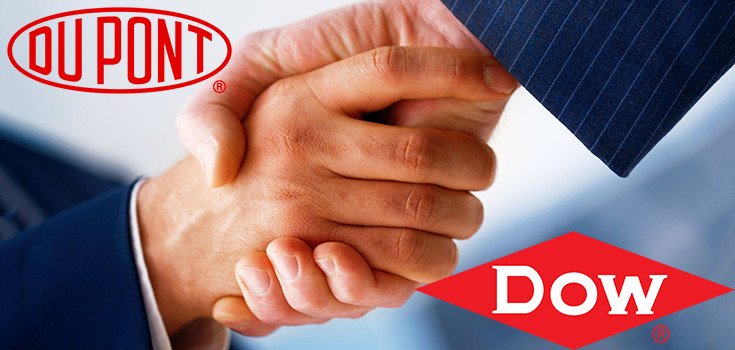Agrichemical Companies Dow and DuPont to Merge, then Split into 3 Mega Companies

Dow Chemical and DuPont are to merge under a $130 billion deal, only to split into 3 independently-traded companies: one in agrichemicals, one in specialty products, and one in materials science. [1]
Is the merger between Dow Chemical and DuPont really the breakup of some of the Big Six agrichemical giants, or just a form of musical chairs meant to confound farmers and anti-GMO activists around the world?
The combined sales of both companies amounted to $93.2 billion last year. This included sales of cancer-causing herbicides and petroleum-based fertilizers as well as GM seed.
Edward Breen, chairman and chief executive of DuPont, says:
“When I look at DuPont and Dow I see businesses that fit together like hand and glove, which gives us the ability to create three highly focused companies, because of the combined assets, capabilities and scales.”
More likely, the companies are looking to cover their rear-ends since another Big Six agrichemical company, Monsanto, has seen some serious losses on their accounting books lately.
“The merger is expected to deliver $3 billion in cost savings through synergies and save $1billion in growth synergies. Ten percent of the cost savings will come from R&D. The merger follows depressed commodity prices and a rising US dollar, which has hurt Dow and DuPont.”
The largest business resulting from the merger will be the materials science company with around $51 billion in revenues, $45 billion coming from Dow. DuPont makes more specialized products such as Nylon, Kevlar, and Teflon, whereas Dow manufactures plastic precursors and polymers such as polyurethane and polyethylene, all toxic products known to harm human health and damage the environment.
Certainly not everyone is happy with the merger:
“DuPont shareholders angry over the company’s recent cuts and proposed $130 billion mega-merger with Dow Chemical have few options to express their displeasure, corporate law experts say.”
Does it really matter how these companies divvy up their billion-dollar pies as long as they are harming human health and polluting the environment?
Sources:
